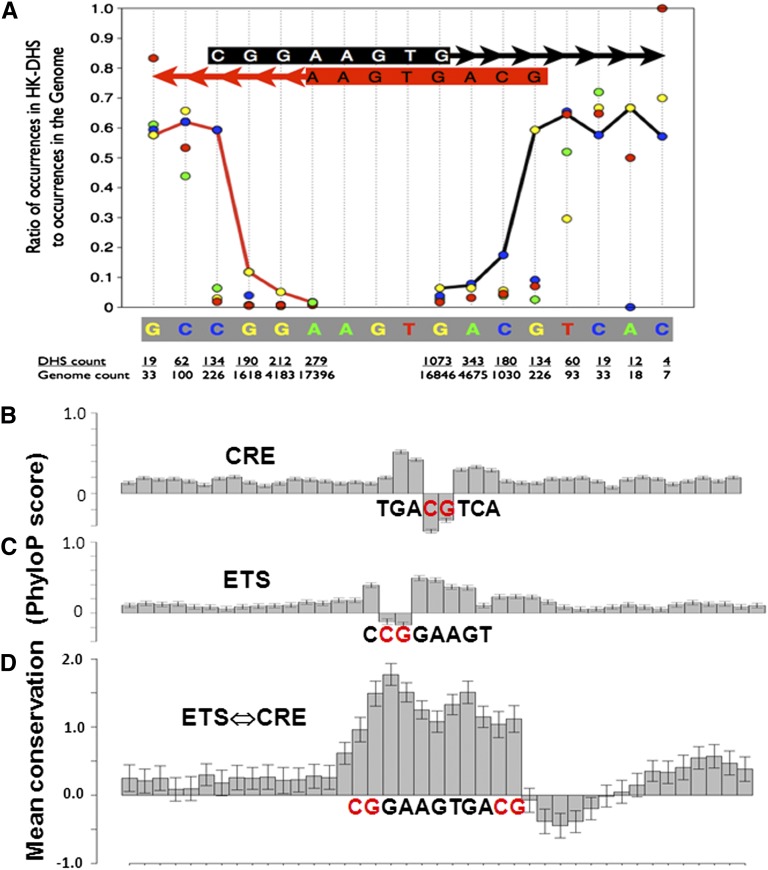Figure 5 .
(A) Preferential localization in housekeeping DHS compared with the genome for different length of ETS⇔CRE sequences. The ETS (CGGAAGTG) and CRE (AAGTGACG) 8-mers were lengthened toward the indicated arrows, and for each bp extension, preferential localization in housekeeping DHS are calculated. A jump in localization of ETS (CGGAAGTG) occurs when the second CG dinucleotide is included, which creates the 11-mer CGGAAGTGACG. The ETS 8-mer CGGAAGTG occurs 16,846 times in the genome and 1073 times in housekeeping DHS, a ratio of ∼8%. The ratio in housekeeping DHS of 8-mers (CGGAAGTN) with a different final nucleotide are shown as a colored dot (G = yellow, A = green, T = red, C = blue). The ETS 9-mer CGGAAGTGA occurs 343 times in housekeeping DHS with a similar enrichment in housekeeping DHS as the 8-mer. When the sequence is extended to the 11-mer CGGAAGTGACG, enrichment in housekeeping DHS jumps to 60%. If the final G in the 11-mer is changed to the three other nucleotides, enrichment in housekeeping DHS is only 10%. When the ETS⇔CRE motif is extended to a 12-mer and beyond, enrichment in housekeeping DHS remains constant. When the ETS⇔CRE motif is extended from the CRE side toward the ETS side, a jump in localization in housekeeping DHS occurs when the AAGTGACG 8-mer is extended to the CGGAAGTGACG 11-mer. (B) Conservation or phyloP score in 30 mammals for the CRE 8-mer. (C) phyloP score for the ETS 8-mer. (D) phyloP score for the ETS⇔CRE 11-mer.

